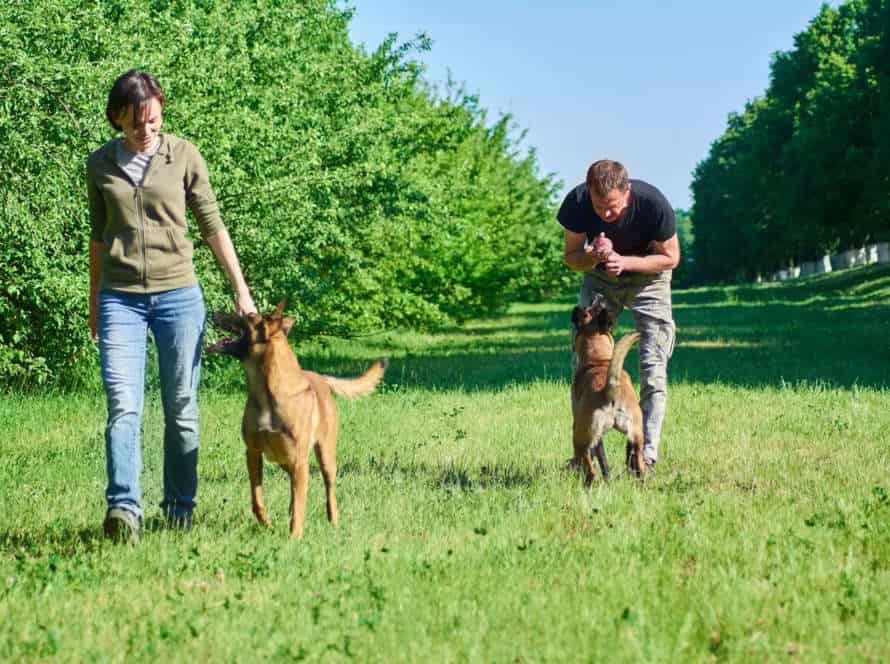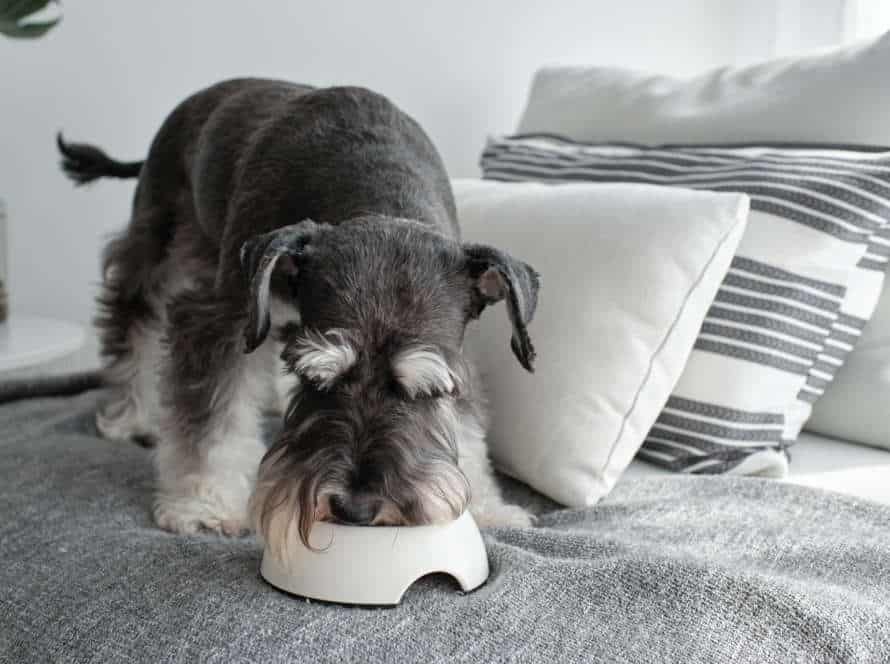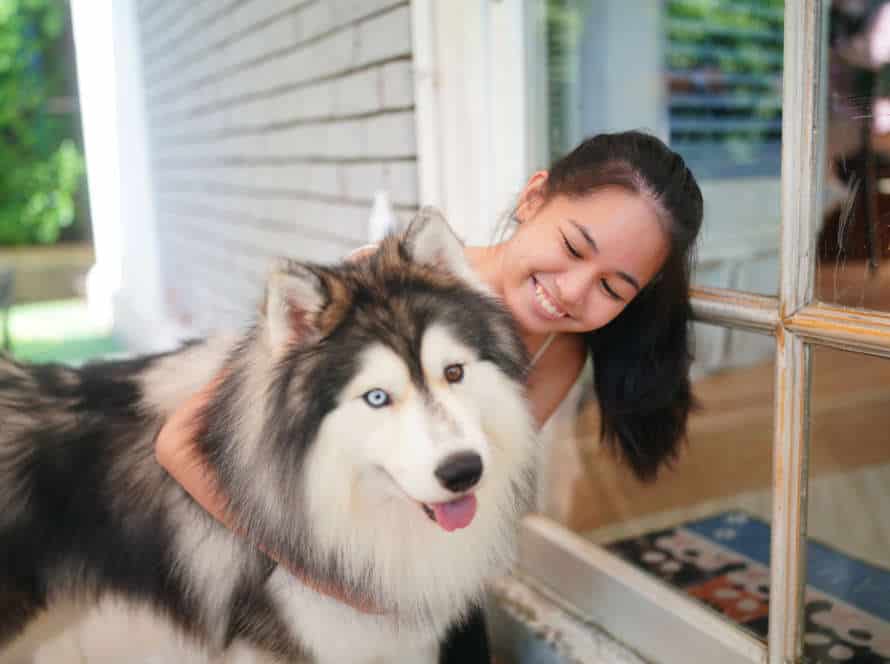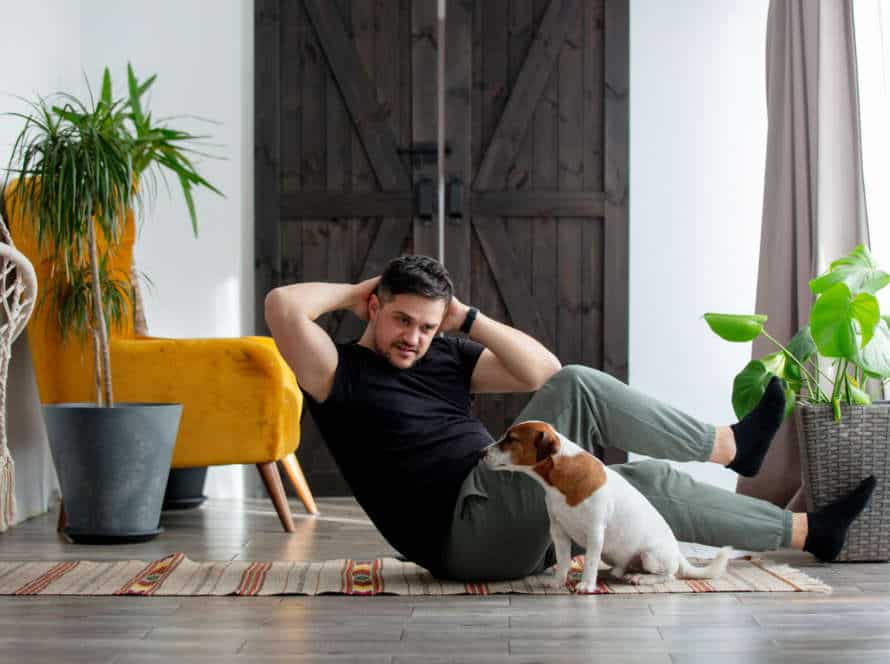Maintaining Your Adult Dog’s Grooming Routine: Tips for Success
Grooming your adult pup is super important for their health, comfort and looks. Here are 5 tips for successful grooming:
- Brush their coat often. This helps prevent matting, take away loose fur and spread natural oils. The frequency depends on the breed and coat type.
- Cut their nails regularly. Overgrown nails can cause mobility issues and discomfort.
- Clean their ears to avoid infection and wax/debris build-up.
- Only bathe them when needed, using dog-specific shampoo and conditioner. Too much bathing may strip their coat of oils, leading to itchy skin.
- Brush their teeth to prevent dental issues and bad breath.
By following these tips, your doggy can stay happy, healthy and looking amazing. Plus, it’s a great bonding experience, so make sure to be patient, loving and positive.
Why Grooming is Essential for Adult Dogs
Grooming is key for adult dogs! It keeps their coat clean, free of dirt & tangles. It also helps maintain skin health & keeps them free from parasites & skin issues. Plus, it reduces bad doggy odors. Why is grooming so important for adult dogs? Here are some things to keep in mind when grooming them.
Importance of maintaining your dog’s fur and skin health
Grooming your adult dog is important – not just for their looks, but also for their overall wellness. Here’s why:
- Brushing their fur gets rid of dirt, debris and tangles, encouraging healthy hair growth and avoiding knots.
- Trimming their nails prevents overgrowth, pain, injuries and infections.
- Cleaning their ears prevents inflammation and infections.
- Regular brushing and bathing can spot lumps, bumps or painful areas early.
Managing your pup’s grooming routine can be tough, so consider consulting a pro. Plus, make sure to create a regular schedule. Pro tip – make the experience positive for them by offering treats or compliments.
How grooming can help prevent infections
Grooming is essential for adult dogs. It’s more than a quick bath or brush. Here’s how it prevents infections:
- Skin/coat: Brushing/bathing removes dirt, debris and parasites that cause skin irritation.
- Ear care: Cleaning ears prevents bacterial/yeast infections.
- Nail care: Trimmed nails prevent pain and infections.
- Oral care: Keeping the mouth clean prevents bacterial infections.
Regular grooming gives you a chance to detect infections early and bond with your pet. Pro Tip: Use special tools, make it a positive experience and reward your pet for being cooperative.
Benefits of grooming in promoting overall wellbeing of your dog
Grooming your pup isn’t just about looking and smelling good. It’s an important part of keeping them healthy! Here are some of the key benefits:
- Good hygiene: Grooming stops dirt, debris, and parasites from building up on their skin, helping to avoid skin problems.
- Healthy skin and coat: Grooming helps blood flow to their skin, which creates natural oils that keep them looking their best.
- Less shedding: Brushing and combing removes loose hair and cuts down on shedding.
- Bonding: Grooming lets you spend quality time together, strengthening trust.
- Early detection of health issues: You may spot small bumps, injuries, or other health problems during the grooming process. This lets you get treatment quickly.
Regular grooming is a must for your pet’s physical and emotional wellbeing, as well as for your bond.
Types of Grooming for Adult Dogs
Grown-up pooches have unlike grooming requirements than puppies. Yet, they should have a routine grooming. There are numerous types of grooming to ensure your dog is content and healthy. Common kinds are:
- Bathing
- Brushing
- Nail trimming
- Ear cleaning
Let’s delve into these further.
Brushing and Combing Techniques for Different Coat Types
Proper brushing and combing techniques are key for adult dog grooming. It varies depending on the coat type. Knowing the coat type is important to determine what grooming they need.
For short-haired dogs: Use a rubber brush to remove dirt and fur. A bristle brush helps with natural oils, shine and gloss. A grooming mitt is great too!
Medium-haired dogs: A slicker brush to remove mats, tangles and loose hair. Then use a wide-tooth comb to finish.
Long-haired dogs: Use a slicker brush to start, then a metal comb for tangles or mats.
Double-coated dogs: First, an undercoat rake to get the loose fur. Followed by a slicker brush for left over tangles or mats.
Bathing and Drying your Adult Dog
Bathing and drying your adult dog is an essential part of their grooming routine. Regular baths help keep your pup clean, prevent skin irritations, and remove parasites and bacteria.
Follow these steps:
- Select a pet-friendly shampoo for your dog’s coat type and skin condition.
- Comb out any tangles or mats before wetting the coat.
- Wet your pup with warm water.
- Apply the shampoo, avoiding eyes, and rinse well.
- Gently towel dry and use a hairdryer on low heat to finish.
- Brush their coat when fully dry.
To keep your dog’s coat healthy, clean, and shiny, maintain their grooming routine. Quality grooming tools, nutritious food, and regular checkups will help you achieve it.
Nails, Ears, and Teeth – Proper Care Techniques
Proper nail, ear, and teeth care are vital for your pup’s grooming routine. Forgetting these areas can lead to painful issues that can affect your doggy’s health.
Nail care
Cut your pup’s nails regularly to avoid them becoming too long and causing discomfort when walking or running. Use high-quality clippers to trim the tips, careful not to cut into the quick.
Ear care
Clean your pup’s ears often to prevent buildup of wax and debris that could cause infections. Use a gentle ear cleaning solution and cotton balls to clean the outer ear canal.
Teeth care
Brushing teeth and dental care frequently can keep bad breath, gum disease, and tooth decay away. Use a soft-bristled toothbrush and dog-safe toothpaste to brush your pup’s teeth daily.
By following these grooming techniques, your adult dog can remain healthy, comfy, and content.
Grooming Frequency and Schedule for Adult Dogs
Grooming is a must for adult canines. Brushing, bathing, and trimming nails regularly stops dirt and debris from piling up, plus avoids skin discomforts and fur tangles. Setting up a routine and sticking to it is key to your pup’s grooming health. Let’s look at the significance of grooming frequency and schedule for adult pooches.
Types of Grooming and recommended frequency of each
Grooming your adult pooch is essential for their wellbeing and joy. Knowing the different sorts of grooming and the suggested recurrence of each can assist you with keeping up your canine’s grooming schedule effectively. Here’s a breakdown of the various sorts of grooming:
- Brushing: Regular brushing helps expel free hide, earth, and tangles from your canine’s coat. The suggested recurrence of brushing relies upon the length and thickness of your canine’s coat.
- Bathing: Bathing your canine assists with keeping their coat clean and sound. The suggested recurrence of bathing relies upon your canine’s activity level and skin condition.
- Nail trimming: Regular nail trimming forestalls your canine’s nails from getting excessively long and causing distress. The suggested recurrence of nail trimming relies upon how quickly your canine’s nails develop.
- Ear cleaning: Regular ear cleaning helps forestall ear contaminations and other ear-related medical issues. The suggested recurrence of ear cleaning relies upon your canine’s breed and ear shape.
- Dental care: Regular dental care, including brushing and dental chews, helps forestall dental illnesses and terrible breath. The suggested recurrence of dental care relies upon your canine’s dental wellbeing.
Pursuing a consistent grooming schedule can keep your canine sound, upbeat, and liberated from regular medical issues.
Pro tip: Start grooming your canine from a youthful age to get them used to the cycle and keep away from any dread or uneasiness.
How often bathing should be done and any special considerations
Bathing your adult pup is an important part of their grooming. But, how often should you do it? It depends on breed, coat type, and lifestyle.
- Breed: Poodles need regular baths as their coat grows fast & mats easily. Shiba Inus, on the other hand, don’t need them as often as their coat is milder.
- Coat type: Dogs with oily coats or skin irritation need more baths. Those with dry skin need fewer, as too many baths can strip off natural oils.
- Lifestyle: If your pup rolls around in the dirt or spends lots of time outside, more baths are a must.
In general, bathing once every 4-6 weeks is enough to keep them clean. But, always consult with your vet first. Consider any special needs before deciding how often to bathe them.
Maintaining a schedule to help keep to a consistent grooming routine
Creating a grooming schedule is key for owning an adult dog. It helps keep their coat and skin healthy, preventing allergies and infections.
To make a grooming routine, consider your dog’s breed, coat type, shedding frequency, and overall health. Here are some tips:
- Brush your pup’s coat at least once a week.
- Trim their nails every three to four weeks.
- Bathe them as needed, but not too often.
- Check their ears, teeth, and eyes regularly.
Making grooming a positive experience is essential. Use treats, toys, or praise to make brushing, bathing, and grooming sessions enjoyable for your pup.
Common Grooming Problems and Solutions for Adult Dogs
Adult pooches demand regular grooming to keep a lustrous coat and healthy skin. Common grooming issues for adult dogs can range from loads of shedding to infrequent baths. Although some grooming troubles may need an expert, there are simple steps you can take to make sure your adult dog’s coat appears and feels great. Let us explore some common grooming issues and solutions for adult canines.
Matting or Knotting of fur – How to prevent and remove mats
Matting of fur is a problem adult dogs with long, thick coats often face. It can be painful and lead to other health issues. To prevent and remove mats from your pup’s coat, try these tips:
- Brush regularly.
- Keep fur clean and dry.
- Trim sensitive parts.
- Use detangling spray.
If mats are particularly severe, take your pooch to a professional groomer. With regular grooming and the right techniques, you can keep your furry friend looking and feeling their best!
Tick and Flea Infestations – Recognizing and Treating Infestations
Taking care of tick and flea problems is important for your adult dog’s wellbeing. To help your pup stay healthy, here’s what to know.
Signs of infestation include: excessive licking and scratching, red/irritated skin, fleas/ticks on fur, and dark specks (flea dirt).
Treatment options include medicated shampoos/sprays, collars, spot-on treatments, and oral meds.
Prevention tips:
- Use prevention products
- Keep bedding clean/vacuumed
- Keep outdoor area clean
- Check for ticks after being outdoors
Anal Gland Issues – How to identify and solve them
Anal glands in dogs are common. Look out for signs like discharge, licking, and scooting. They’re beside the rectum and secrete a smelly oil for stool lubrication. Blocking them causes discomfort and pain.
Identify and solve anal gland issues:
- Observe your pup for symptoms.
- Check for any discharge or smell near the anus.
- Take them to a vet for a diagnosis and treatment plan.
- Vet may express glands manually or medicate in severe cases.
- Prevent future blockages – exercise and feed a balanced diet for healthy bowel movements.
- Regular grooming also helps – keep the anus area clean and trimmed.
Professional Services for Adult Dog Grooming
Adult dog grooming can be tricky, especially if you’re a new pet parent. Don’t try to tackle it alone! Consider getting help from a professional groomer. They have the proper equipment and experience to make sure your dog’s fur, nails and teeth are taken care of.
Let’s explore the advantages and disadvantages of professional adult dog grooming.
When To Use Professional Services
Groom your adult dog for hygiene and health. You can do it yourself or use a professional. When to get help?
- Heavy matting: Take them to a groomer. Mats lead to skin irritation and pain.
- Behavioral issues: A professional will avoid harm.
- Special needs: Groomers have specific techniques to handle medical conditions or disabilities.
- Lack of time or expertise: Seek help. A professional has the knowledge, experience, and equipment to make your dog look and feel their best.
Choosing a Groomer, the factors to be considered
When picking a groomer for your adult pup, you need to think about some stuff cautiously. To make sure your dog is looked after properly, without any issues or health problems, bear in mind these key points:
- Experience and know-how: Look for a groomer who is experienced with adult dogs and knows how to groom them.
- Reputation: Check out the groomer’s reputation by reading online reviews or ask other pup owners for advice.
- Facility and gear: Make sure the groomer’s facility and equipment are clean, secure, and suitable for grown-up dogs.
- Services provided: Examine the services offered by the groomer and make sure they fit your adult dog’s grooming needs.
- Cost: Compare prices between different groomers and make sure it is affordable and within your budget.
By considering all these factors, you can select a groomer who is perfect to take care of your adult dog’s grooming needs and keep their grooming regimen successful.
Special Services Offered by Professional Groomers, Training and Certification Considerations.
Groomers provide a range of services to make your adult pup look and feel great. From basic bathing and brushing to more specialized treatments, here are a few of the services groomers may offer:
- Nail trimming
- Ear cleaning
- Teeth brushing
- Skin and coat treatments (medicated shampoos, flea/tick treatments, de-matting)
- Anal gland expression
- Breed-specific grooming (e.g. poodle cuts or terrier trims).
When picking a groomer, be sure to check their training and certification. Look for those who have received an accredited training program and are certified by a professional organization. This ensures your pooch receives top-notch care from an experienced groomer.
Pro tip: Schedule regular appointments to keep your pet’s grooming routine up and maintain their health.
Frequently Asked Questions
Q: How often should I groom my adult dog?
A: The frequency of grooming depends on the breed and coat type of your dog. Generally, dogs should be groomed at least once a week to maintain their coat and skin health.
Q: Can I groom my dog at home?
A: Yes, you can groom your dog at home. However, it is important to use the right tools and techniques to avoid any injuries. You can also take your dog to a professional groomer for a more thorough grooming session.
Q: What are the essential grooming tools for an adult dog?
A: The essential grooming tools for an adult dog include a brush, comb, nail clippers, and shampoo. The type and size of the tools may vary depending on the dog’s coat type and grooming needs.
Q: How can I prevent matting in my dog’s coat?
A: Regular brushing and combing is the best way to prevent matting in your dog’s coat. You should also trim your dog’s hair regularly and use a detangling spray if necessary.
Q: Can I bathe my dog too often?
A: It is not recommended to bathe your dog too often as it can strip the natural oils from their skin and coat. A bath every 4-6 weeks is usually sufficient, but may vary depending on the dog’s specific needs and activities.
Q: How can I keep my dog’s ears clean?
A: You can keep your dog’s ears clean by wiping them with a damp cloth or using an ear cleaner solution recommended by your veterinarian. It is important to avoid getting water or any liquids into the ear canal when cleaning.







